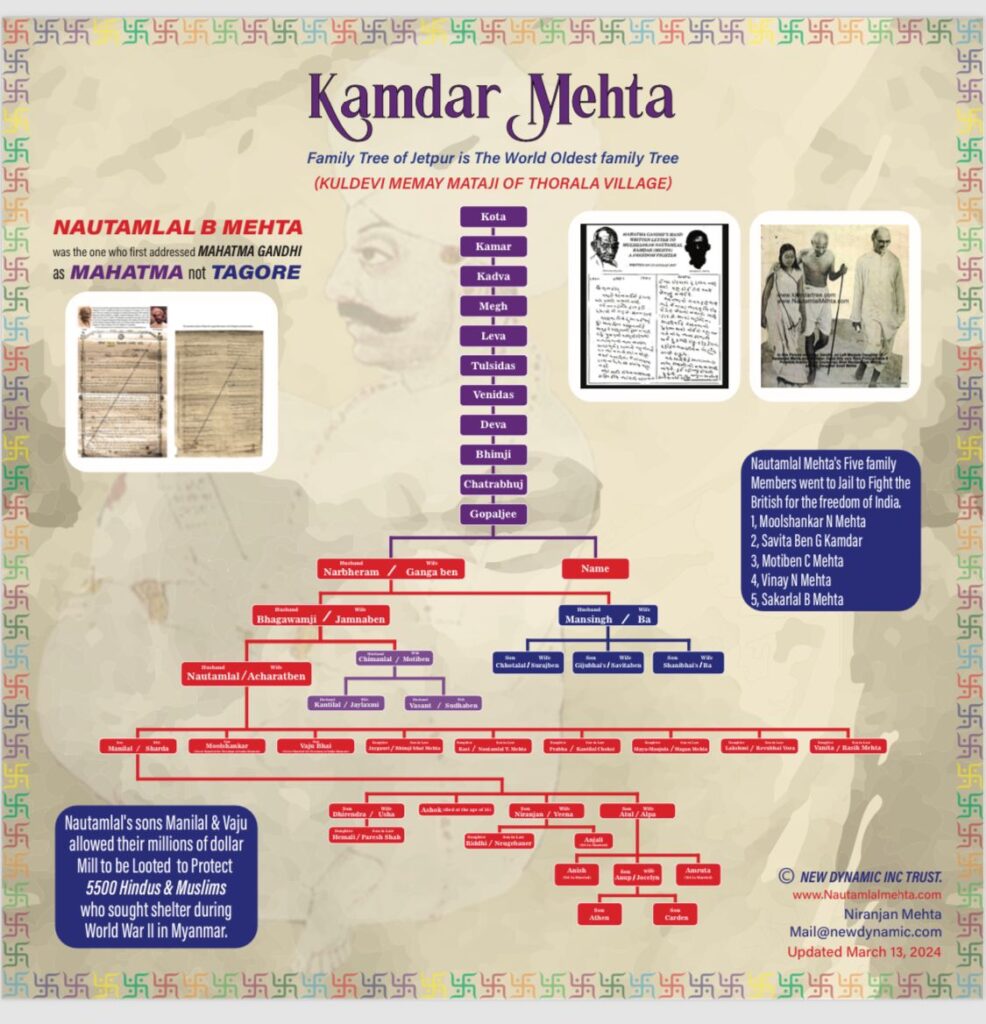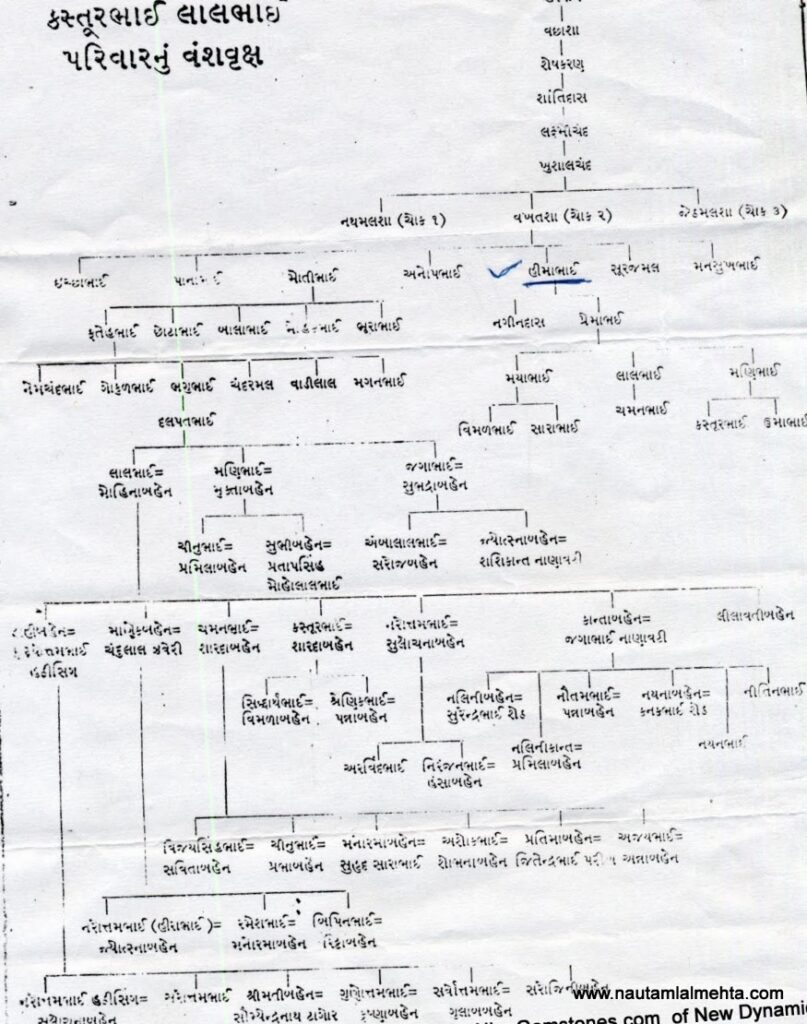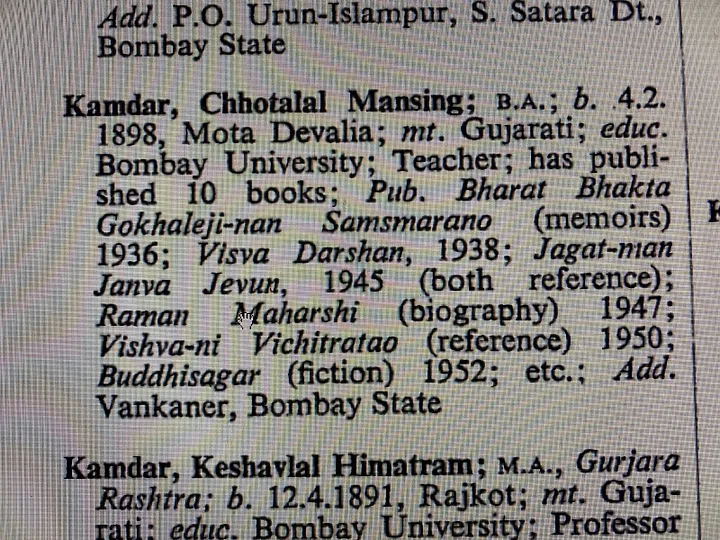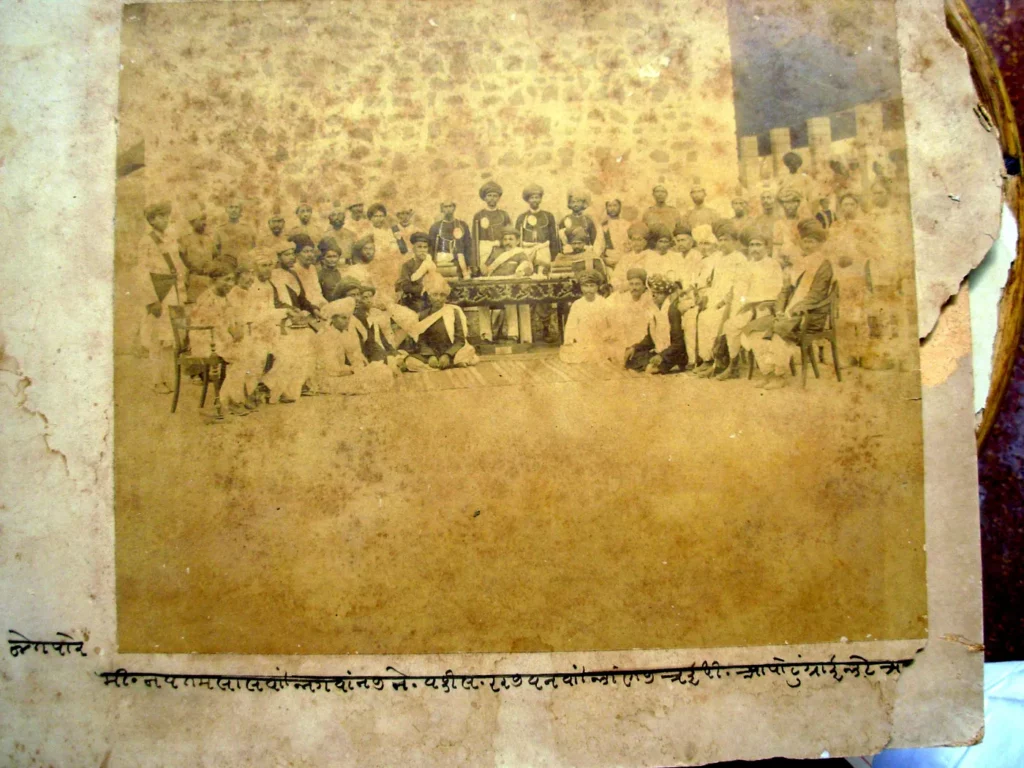Himabhai’s GrandSon was Kastur Bhai Lalbhai of Ahmedabad, a Textile Magnet; Narbheram’Grandson was Nautamlal B. Mehta of Jetpur, who first coined the Word “Mahatma” for Gandhiji.
This May be the Only family website in the World where you will see More Documents, Proof, and evidence, Very Little or NO subjective or creative writing because Our documents speak for themselves.
Note: We could have Hired a Book writer, a film Producer, or a journalist very comfortably to make more Drama with lots of publicity. But it is not in our background. And it is never needed because every document speaks for itself with a few lines. It is a matter of your sense, your logic. And Judgment. I don’t want our golden truth to be polluted.
For thousands of years, Jain inherited a Money Transection system of trust and integrity. No paper, no oral words, just empirical trust.
(translation: A Jain’s virtue of brotherhood in business)
Note: We could have Hired a Book writer, a film Producer, or a journalist very comfortably to make more Drama with lots of publicity. But it is not in our background. And it is never needed because every document speaks for itself with a few lines. It is a matter of your sense, your logic. And Judgment. I don’t want our golden truth to be polluted.
For thousands of years, Jain inherited a Money Transection system of trust and integrity. No paper, no oral words, just empirical trust.
(translation: A Jain’s virtue of brotherhood in business)
Writer: Chhotalal Mansingh Kamdar (Chhotalal Mansingh Kamdar is the grandson of Narbheram Gopalji).
Retold by Niranjan Manilal Mehta (great grandson of Narbheram).
Mehta and Kamdar of Jetpur are the same family last name for generations.
CONTEXT: Narbheram Gopalji had his hands in all of Jetpur’s ruling and administration and had a reputation of honesty, trust, and integrity. Please note: 1,50,000 rupees in 1830 is equivalent to 15,Karod Presnt rupees or about 2 million US dollars today.
This is a true, well documented and historical story from a prominent Indian business family Kasturbhai Lalbhai of Ahmedabad and Narbheram Gopalji of Jetpur, Gujarat. This event happened in 1830. How Jain Vania (verna, not caste) used to do business with sheer honesty, trust, and integrity.
This is an authentic, well-documented, and historical story from a prominent Indian business family, Kasturbhai Lalbhai of Ahmedabad and Narbheram Gopalji of Jetpur, Gujarat. This event happened in 1830 when JainVania (Verna, not caste) used to do business with sheer honesty, trust, and integrity.
Definitions:
Swamibhai = Jain brotherhood
Sadhu = Hindu priest
Hundi:an unconditional order in writing made by a person directing another to pay a certain sum of money to a person named in the order
Langot = loincloth (mans underwear)
Pedhi = financial institution
Jai Sitaram = long live Sita and Ram (Hindu gods)
Sheth = business owner
Shankaracharya sangh = followers of Shankaracharya
Memon = Muslim business traders
Chimta
Munim = head accountant
Tulsi = holy basil
Narbheram Gopalji with son Bhagwanji (left). Narbheram Gopalji (center). Statue of Sheth Himabhai (right)
Family Tree of (Atul-Niranjan-Ashok-Dhirendra all four Sons of Manial) Manilal Nautamlal Mehta-Kamdar of Jetpur (Saurashtra)

1. Athens and Carden ( Sons of Anup)
2. Anish and Anup ( Sons of Atul)
3. Atul, Niranjan, Ashok, Dhirendra (Sons of manilal)
4. Vaju, Moolshanker, Manilal (sons of nautamlal)
5. Nautamlal and Chimanlal (sons of Bhagawanji)
6. Bhagawanji bhai and Mansingh bhai (sons of Narbheram)
7. Narbheram
8. Gopaljee
9. Chatrabhuj
10. Bhimji
11. Deva
12. Venidas
13. Tulsidas
14. Leva
15. Megh
16. Kadva
17. Kamar
18. Kota
After the Name of our Great Grandfather, “Kota,” we do not have any precise info. Memorizing the family tree is an oral tradition we all must memorize in our teens. There is no chance of distortion or mistake. These Bharatiyatas and their thousands of years of Inter woven traditions.
Below is the Translation from Originally Published in Gujarati
Translation of the letters (context: Three Memoms visited Narbheram Gopalji’s pedhi in Jetpur):
How are you, Sheth?
Narbheram Gopalji welcomed them with a smile and requested three Memons to have a seat in the shop.
One of the Memon said: “Sir, we came to you, knowing your reputation and we need a hundi for Ahmedabad.”
Narbheram Gopalji asked: “how much?”
The Memon man said: “1 lakh 50 thousand rupees.”
The Memons were from Dhoraji and wanted to buy clothes from Ahmedabad. Carrying such a considerable amount was dangerous while traveling, so they thought of a hundi. The Memons came to Narbheram Gopalji with the hopes he could write them a hundi to a similar Sheth in Ahmedabad.
Narbheram Gopalji had no branch or financial connection in Ahmedabad, and nobody knew him in Ahmedabad to process such an amount. This situation made Narbheram Gopalji very uncomfortable. At the same time, he felt the faith and trust of these Memons in him. He felt determined to help without saying no; he questioned himself, how can I help these people?
Narbheram Gopalji said yes to Memon “sure you will get hundi from us, but you will pay a fee of 4 anna per 100 rupees.
“That’s fine!” the three Memons uttered with joy and thought that the money will be safe. The Memon said that if you are walking down the road, no one can loot you.
The Memons counted the money and gave it to Narbheram Gopalji, who promptly started writing the hundi, but on whose name hundi is it to be written!? Since he had no branch or personal connections in Ahmedabad, then who would accept such a massive financial risk without personally knowing him. However, Narbheram Gopalji was born into a prominent Stanikvasi Jain family and he’d heard about Himabhai Sheth in Ahmedabad, a big Jain businessman (his great-grandson is Kasturbhai of Lalbhai Group and Atul Industries)
Narbheram Gopalji also heard that three or four years back, Himabhai and his family visited Palitana (the Vatican or Mecca for Jains). Knowing this Jain brotherhood (Swamibhai) gave Narbheram Gopalji the confidence to write this challenging hundi in the name of Himabhai Sheth.
The Memons felt very happy knowing their journey to Ahmedabad would be safe, as they had no fear of getting robbed and as soon as they reached Ahmedabad, the Memons found Himabhai’s shop and presented the hundi.
Since it was early in the morning, Himabhai hadn’t arrived at the shop yet. A Munim took the hundi. He saw the name, but he didn’t know any Narbheram Gopalji. Since it was an unknown name to him, he raised his hands with suspicion.
Right at that moment, Himabhai Sheth entered. The Munim showed the hundi to Himabhai in a sarcastic tone in front of the Memons. Himabhai said to the Munim: “it’s okay, enter the date.” He then looked at the Memons and said: “have a seat, Sethias, we will get the money to you.”
Munim did not say anything. He requested Himabhai to come into another room for a quick chat. The Munim said: “how can we accept this hundi? We do not have any known contact in Jetpur, nor do we know Narbheram Gopalji in Jetpur, nor do we have his money credited to us.”
Himabhai laughed and said to Munim: “don’t worry, you must understand that the person who brought this hundi are Memon businessmen. Moreover, the person who gave them a hundi of 1,50,000 is aware of his respect in the market. Despite being a Jain Vaniya, you didn’t understand the greatest virtue of Jain Vaniya traits in this situation. Narbheram Gopalji must have counted 1,50,000 rupees in Jetpur and trusted the Memons with a 1,50,000 hundi. We musn’t be arrogant in this situation, so kindly accept the hundi.” Himabhai continued to say: “if these Memon’s trusted Narbheram Gopalji by giving him 1,50,000 that must mean Narbheram Gopalji is very reputable and with integrity. Given we are all Jain, we must trust each other (Swamibhai).”
The Munim gave them their money and the Memon said “we need a hundi issuer like this in our [town]!”
The Memons were satisfied and left with appreciation so they could start their shopping.
PART 2
The following day, a group of Sadhus wearing dark clothes, langots, and their bodies smeared in ash arrived at Himabhai’s shop and sat down. The person cleaning the floor said: “don’t sit here.” The Sadhus said “we want to see Himabhai.” The cleaner said “he’s not here” and feeling uncomfortable around these Sadhus wasn’t sure what to do. The Sadhus then said they wouldn’t stand up or move until Himabhai came. So the cleaner asked them to come after an hour or else he’d have to drag them out by their ears. Then the Munim used very strong language towards the Sadhus, but the Sadhus paid no heed and waited at the shop until Himabhai arrived.
The Sadhus reached out to the side office door and started making noise by clicking their long chimtas. The Munim became very uncomfortable, scared, and quickly went back inside the pedhi.
One after the other the Sadhus surrounded Himabhai’s pedhi and started becoming fierce and aggressive. It was quite an unusual moment and they were chanting Jai Sitaram. Before they knew it, the Sadhus increased in numbers and now there were 40–50 surrounding Himabhai’s pedhi! The people surrounding Himabhai pedhi started getting curious and wondering who these outsiders are. Some thought they might have gathered for the Shankaracharya sangh. Eventually the people started spreading rumors that there were some looters at Himabhai’s pedhi (many mouths, many stories).
Himabhai then arrived at his pedhi, while the Sadhus were now chanting “Om, om” and smoking their corn cob pipes. After seeing the large crowd outside his shop, Himabhai asked the Sadhus what they needed.
One of the more spirited Sadhus from the group asked, “where is Himabhai?” Before Himabhai could respond, the Munim asked “what is that you want? Just say it straight.” One Sadhu responded with “we need to talk to Himabhai.” The Munim spoke again and said “Sheth Himabhai is inside the pedhi. Do you have work with Sheth or do you need money?” The Sadhu responded “we have business with Sheth. Tell him Narbheram Sheth from Jetpur knows him. Narbheram Sheth has sent these tulsi plants.” The Sadhu then pointed his finger near the porch and showed them that there were about 50 potted tulsi plants. Sheth called the Munim and asked him to bring these plants inside.
The Munim was confused as to what was happening and told the Sheth that they didn’t have space in the pedhi for 50 tulsi plants. Himabhai said to safely put them in storage and the Munum obliged.
However, the Munim started losing his patience and asked “what will we do with all these plants and who will water them?” Sheth said “my brother, you’re still an idiot! These tulsi plants are the actual payment of the hundi we granted yesterday.” But still not understanding, Munim asked “what does it have to do with these weird people outside and all these tulsi plants?” Sheth asked him to keep all the plants inside and once he’s finished, then to try pulling one of the plants with force. Once again, the Munim obliged and with the help of the Sadhus started moving all of the plants inside. He noticed that some of the plants were heavier than others and as he was moving them, one accidentally fell from his hands. That’s when he understood the significance of the tulsi plants. He discovered there was a bag of money under the plant, in the pot.
Himabhai accepted his payment and started giving a commission to the Sadhus. However, the Sadhus refused saying they couldn’t take from him as they had received what they wanted from Jetpur.
After hearing this, Himabhai was impressed with the virtue, honesty, and integrity of Narbheram. He was determined to meet him personally and started communicating with Narbheram. Himabhai was preparing for a trip to Girnar and once he reached Gondal notified Narbheram Gopalji. Narbheram Gopalji and his partners organized a grand welcome from Himabhai and his family/group.
Upon meeting, Himabhai gifted a pearl necklace to Narbheram Gopalji’s son, Bhagwanji. Narbheram Gopalji’s wife, Gangabai, refused to accept the necklace, but requested that Himabhai give one rupee to Bhagwanji as a token and blessing. Himabhai was speechless, but did offer the one rupee blessing.
In this fun gathering, Narbheram Gopalji spent almost 50,000 rupees — the local townspeople and neighboring townspeople gathered to see the two Swamibhai’s and their “safe.”
Narbheram Sheth and Himabhai Sheth then went to the Swami Satya event together and enjoyed their time together.
People have forgotten Swamibhai ni sarafi, but Himabhai built a Dharamshala in Junagadh to honor the integrity and honesty of how Swamibhais conduct business.
PART 3
PART 3 is significantly Diverted from Upper Part 1 and Part 2. The fourth-generation great-grandson of Himabhai (Shiddharthbhai Lalbhai) and fifth-generation great-grandson of Narbherambhai (Niranjan) met through karmic connection twice, once in 1966 and then again in 1972.
Siddharth bhai Lalbhai visited the Ranji Trophy Match as Chief Guest, and Niranjan Mehta was the captain of the Gujarat Ranji trophy team in Valsad in 1972
The fourth-generation great-grandson of Himabhai (Shiddharthbhai Lalbhai) and fifth-generation great-grandson of Narbherambhai (Niranjan) met through karmic connection twice, once in 1966 and then again in 1972.
In 1966, Niranjan was invited by Mafatlal Industries for a job assignment. In his Gujarat Mail train compartment, his co-traveler happened to be Shiddharthbhai Lalbhai. Shiddharthbhai Lalbhai curiously asked where Niranjan was from, and Niranjan, who at the time was 18–19 years old, said he was from Jetpur. Then Shiddharthbhai Lalbhai asked if he knew Chhotalal Mansingh Kamdar, and Niranjan said yes, “he’s my great uncle!” Shiddharthbhai Lalbhai said that Chhotalalbhai had contributed a lot of historical and ancient Jain books to the Lalbhai Dalpatbhai Institute of Ideology and Museum of Jain in Ahmedabad.
Then, in 1972, Niranjan was captain of the Gujarat Ranji cricket team, and a cricket match was being played at Atul Industries (Valsad), in which Shiddharthbhai Lalbhai was hosting the game. Shiddharthbhai Lalbhai’s son, Sunilbhai, was about 10 or 12 years old and fond of cricket. Sadly, he had fallen ill and couldn’t come to watch the match. Shiddharthbhai invited Niranjan and Maharashtra’s cricket team captain, Chandu Borde, to his home for dinner. Although this was not their first meeting, Niranjan nor Shiddharthbhai Lalbhai had realized or had any info, least from Niranjan Mehta’s side, that both of their great grandfathers were connected through Swamibhai ni sarafi.
1800–1850 Jetpur Gadi-Satta ( Managing) was controlled by my great-grandfathers narbheram and gopaljee. This picture must have been taken between 1831 and 1840. The British political agents were Mr. Lang and Alexander Walker. Cameras were invented in 1830 ( there is a handwritten note that says this photo is gifted to Nautamlal bhagawanji from Vakil- attorney Harjiwan)
The above Hand written Note is written on Gopaljee Chatrabhuj by some “Parsotam.” This note must be around 1820–1830.






